2012 | Installation with 1 digital print on archival paper and a pair of leather boots | Print (width x height): 9.4 x 6 in. / 24.1 x 15.4 cm. | Archival Paper: Hahnemühle Photo Rag, 188 gsm, acid-free | Printer: Epson Stylus Pro 11880 | Approximate installation (width x depth x height): 19.6 x 13.7 x 37.4 in. / 50 x 35 x 95 cm. | Photos: Project 88, Mumbai
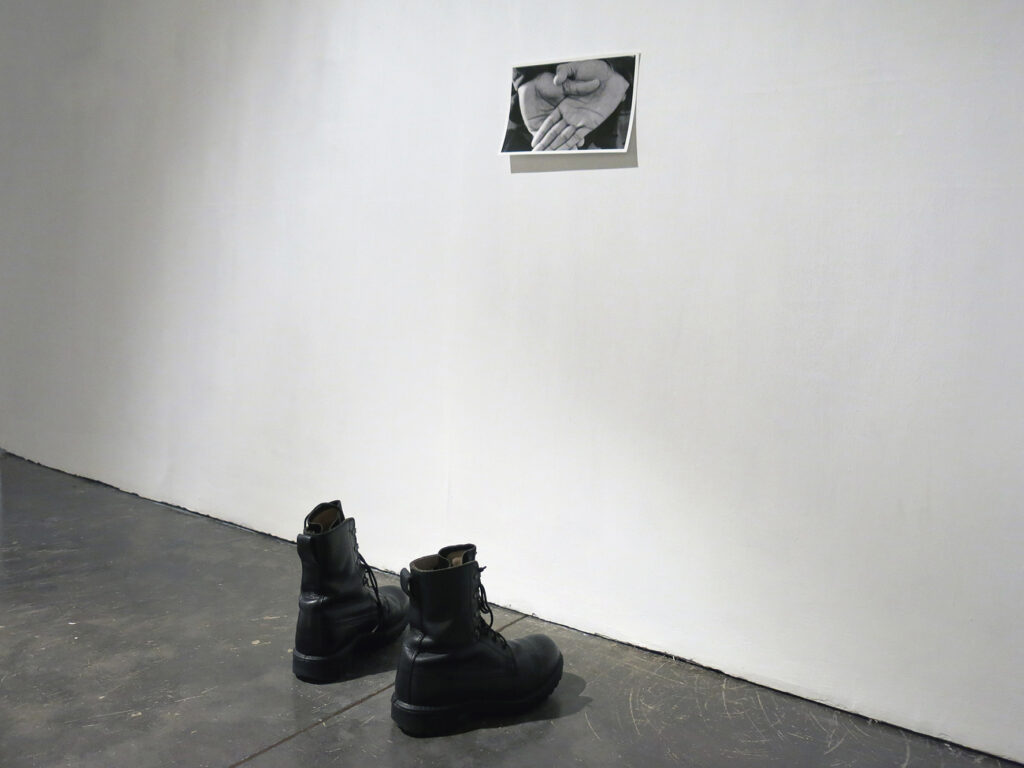
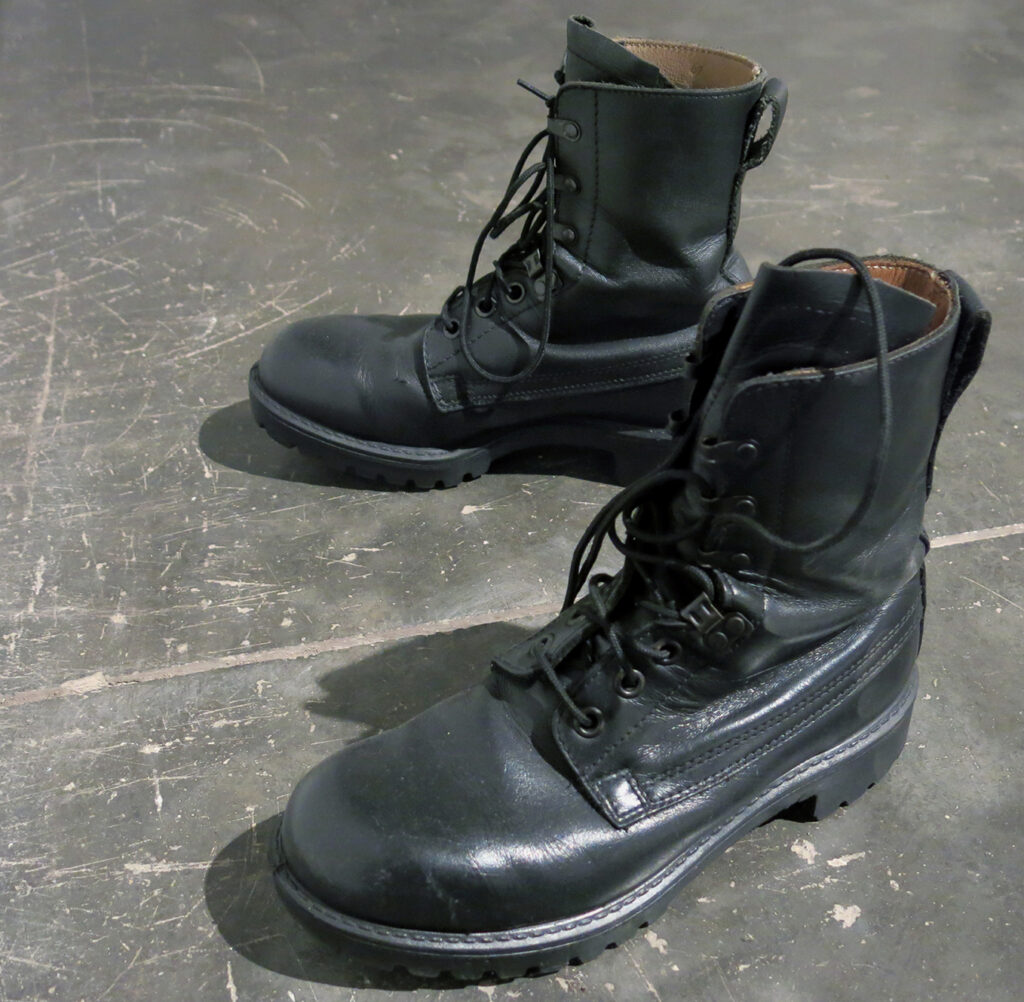
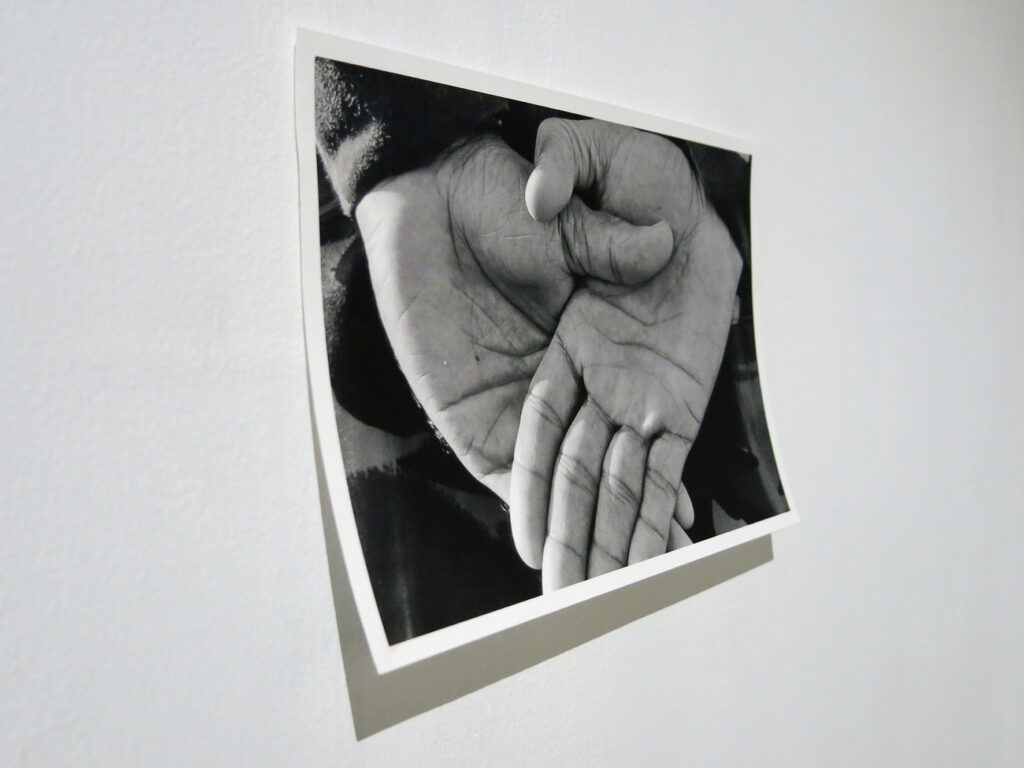
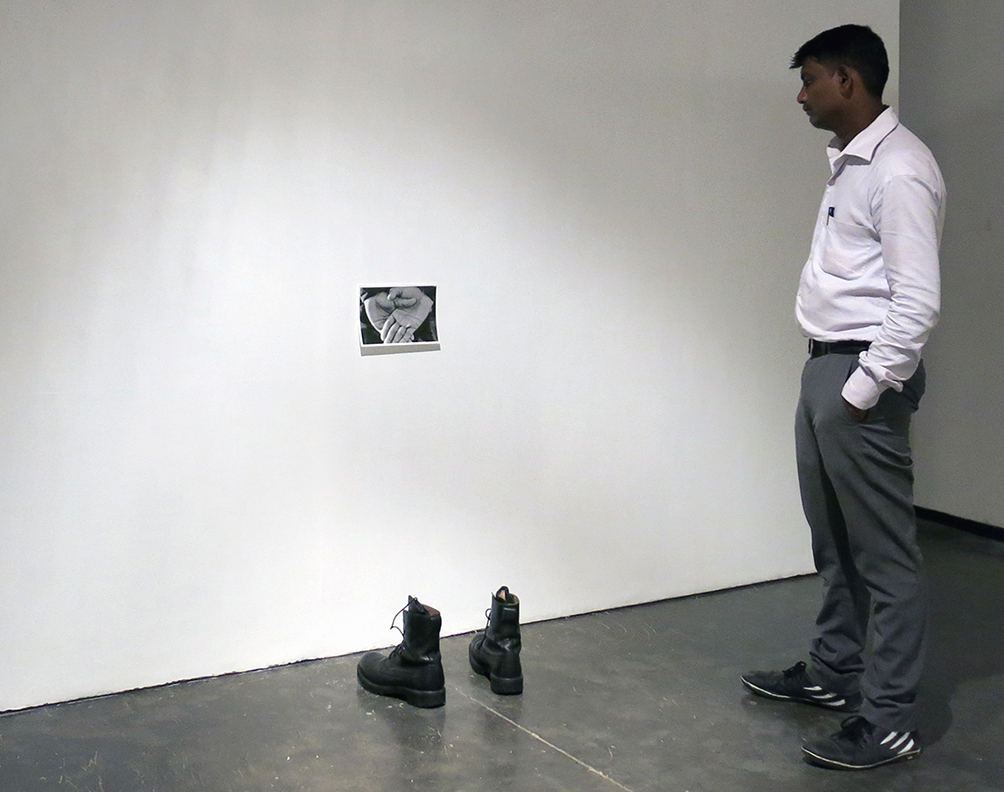
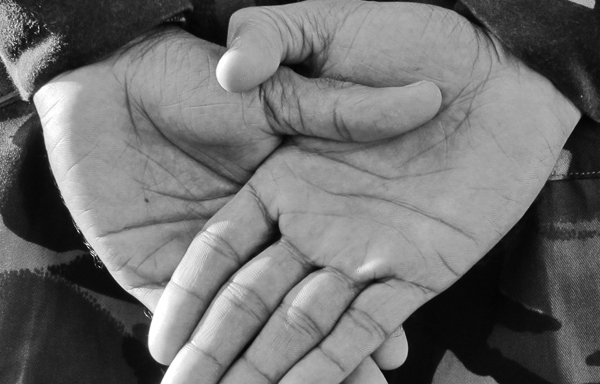
Stand at ease, consists of a pair of black leather boots placed below a black and white photograph. The image shows the artist’s hands, placed one above the other. The photograph and shoes are positioned in a manner to represent a soldier in a relaxed posture as opposed to standing in attention.
Part of the artwork is installed facing the wall and eliminates the presence of a full body. This allows the viewer to dwell on the anonymity and isolation of the soldier; while the blank wall suggests a void or barrier. The army combat boots which are part of the artwork was once used by a British soldier. The act of wearing this British gear became a symbolic gesture and references the complex role and contributions of the Indian allied forces for the British Empire during the World Wars. The notion of being at ease, is in contrast to the rigid discipline that often defines a soldier’s existence. The artwork reflects on the military expression, standing at ease and questions how much ease a soldier feels, within the strict regime of the army.
The installation was developed from the artist’s previous work, Eight Pauses, 2011-12, which consists of eight photographs of the artist, dressed as a soldier, in the stand at ease position in Battersea Park, London. Stand at ease, was developed during Baptist Coelho’s Artist-in-Residence, supported by and at the Delfina Foundation, London, 2011-12. The residency was also supported by Creative India Foundation, Hyderabad; Pump House Gallery, London. In 2012, the installation was first exhibited as part of the artist’s two-person solo exhibition, Social States at Pump House Gallery, London. The exhibition was curated by George Unsworth.